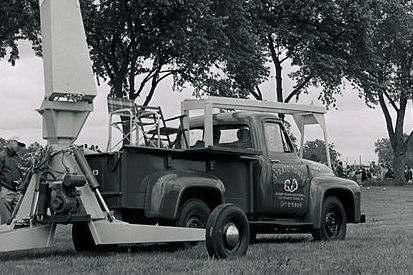
10 Most Influential Pickup Truck Designs
1946 Dodge Power Wagon

Pickups are meant to be rugged and tough-looking, and the roughest and toughest of them all was the influential Dodge Power Wagon. It was also the first civilian four-wheel drive pickup ever made. Though the military had four-wheel drive trucks from the major truck manufacturers going back to the 1930s it never dawned on them to make a version for average customers. Basically what the military used during WWII, it had a standard pickup cab with flat front fenders and a long utility bed out back. Powered by Dodge’s 230 ci straight-six engine it utilized a four-speed manual trans with a two-speed low range transfer case. The Power Wagon also incorporated a PTO both front and rear for running auxiliary equipment. It was produced in various configurations up to 1980, and was the inspiration for the styling of the 1994 Dodge Ram pickup.
1953 Ford F-100 Pickup

Ford continued with its basic F-1 pickup design since the end of WWII. When the all-new 1953 F-100 Ford came out it had a new name and what many feel is the quintessential pickup aesthetic. The design did not follow car design but established its own truck language. It remained the same through 1955, then was updated for 1956 with a wrap-around windshield, new grille, and optional large back window, called a “big window” today. 1953 was the last year for the infamous Ford flathead engine, and then 1954 began the overhead-valve V8 era we are still in today. Ford made millions of these trucks in many configurations with many still in service today. They’re collectible, practical, and easy to work on. You should get one!
1955 Chevy Cameo
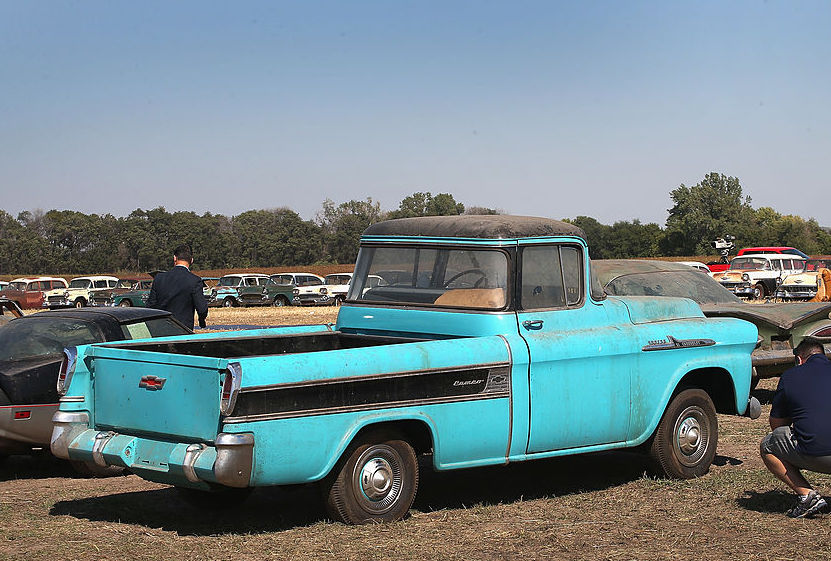
Until the Cameo came out all pickups utilized a separate box and rear fenders. The fenders would ape some of the cab’s style cues but would be large pontoons projecting from the bed sides. Over the years cars had completely shed their separate fenders for a smooth, boat-like fuselage look. No protruding fenders, and no separate grilles. All smoothness and sleek. The 1955 Cameo retained the standard pickup box but got styled fiberglass bedsides that blended into the cab, giving it almost a car-like look. It was considered high-style and though it didn’t add any utility it was the precursor to the “Fleetside” beds that would happen in 1958 and change the pickup forever.
1955 Datsun (Nissan) Pickup

Mostly ignored and forgotten, the Datsun pickups were the first of the slow wave of Japanese imports entering the US in the 1950s. Based on the Datsun 1000 sedan, it was powered by a 25 hp 860 cc Nissan D10 engine and four-speed manual transmission. Nissan continued to revise the small pickup each year eventually giving it more power from a 27 hp B-1 engine and then 37 hp C engine. The first of these trucks to enter the US was in 1958 when it was displayed at the LA Auto Show at the Pan Pacific Auditorium. By 1961 the more familiar 320 with integrated bedsides was introduced and the rest is history.
1958 Chevy Fleetside

We mentioned the Cameo earlier, and it suggested that a smooth bedside could sell, and if the bed was better integrated to those sides could also hold more volume. That’s what Chevy and GMC offered in 1958 with the “fleetside” pickup. More volume, better looks, and a “jet-age” feel forecasted what the modern pickup would become. By 1961 all of the other manufacturers offered a fleetside-type of bed. The stepside continued into the early 2000s when it was quietly dropped by all truck manufacturers.
1961 Ford Unibody Pickup
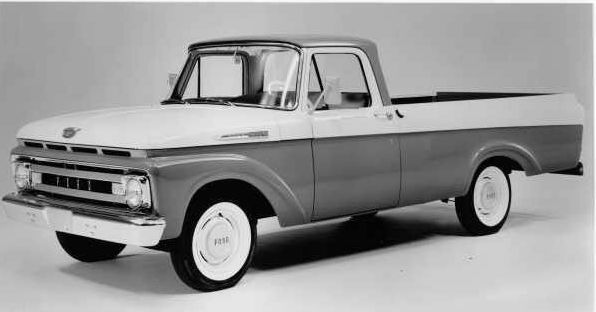
Most of our picks were milestones, but a couple were dogs that indicated what direction not to pursue. They represent attempts to improve on the pickup, but were failures. One was the all-new 1961 Ford F-100 with “integrated bed.” Now they’re called “unibody” by enthusiasts. Ford decided that the cab and bed could be combined for cheaper manufacturing and a more integrated look. Unfortunately problems didn’t occur until the trucks got out in the field pressed into heavy hauling service. That’s when the body stresses kept the doors from opening. That, or they would pop open unexpectedly over ruts or during hard turns. Not good! Ford quickly pressed the previous F-100’s bed back into service and revamped the cab to enclose the back in 1962. The bed styling didn’t match the cab, but these were work horses not for casual use so no one complained. A matching bed came out in 1964.
1973 Ford Camper Special

Chevrolet briefly offered a 10-inch lengthened bed for its pickups to accommodate a longer camper in the early-1970s. Ford was developing its all-new F-150 trucks during that time, saw Chevy’s version, and went a step further. While Chevy never followed up with the idea, Ford heralded the all-new 1973 “Camper Special” as a unique pickup that could accommodate a slide-in camper with a rear axle pushed back for more bed area and better handling. It also moved the spare tire into a separate compartment on the passenger side of the bed. They were odd looking with the rear wheels shoved back, and were also more expensive. For the first couple of years you could even order a fiberglass camper from Ford that took full advantage of the unique bed and longer wheelbase. Available during the entire run of this model F-150 from 1973 to 1979, it didn’t sell well and is slowly becoming collectible for its uniqueness and odd looks.
1973 Chevy/GMC Dually
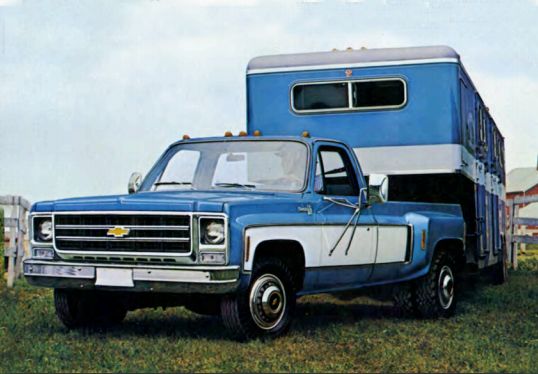
Dual-rear wheels were considered only for heavy-duty commercial truck applications. They were only offered with either a flatbed, or nothing, leaving the final solution up to local truck body manufacturers to customize the back half. Until 1973. That’s when both Chevy and GMC began offering a dual-rear wheel pickup with its standard eight-foot bed, but also with extra fiberglass fenders to cover the wider rear track. Available in both the standard and “3 + 3” crew cab bodies, they were still used for many commercial applications. But, they also became an instant hit with the camping set, as well as for hauling horse trailers, ski boats, and dragsters. They were called “duallys” by enthusiasts. Any of these events in the 1970s or 1980s seemed like a dually convention. Duallys are still being made today and still popular.
1991 Dodge Dakota Convertible
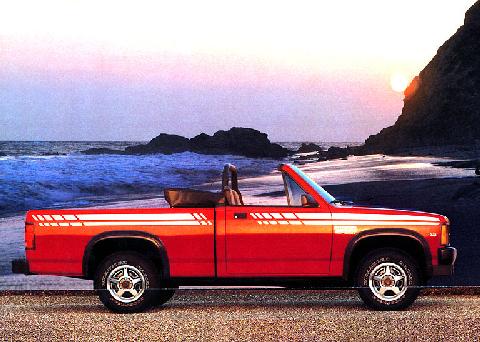
This is another pickup idea that was floated to the public and found no takers. In the 1920s-early-1930s roadster-pickups were a standard way to buy a pickup. There were also closed cabs but especially in places like Florida and California an open truck worked just as well, and it was cheaper. Just as with cars once the convenience of an enclosed cabin was realized slowly the roadster-pickup lost favor and was gone by 1935. Dodge decided it was a good idea to revive a convertible pickup. Introduced in 1989 in conjunction with American Sunroof Co., ASC hacked the roofs off of midsize Dakotas and fashioned a folding convertible top and roll bar. Sort-of like a Jeep Wrangler pickup, right? Coming standard with a 3.9-liter V6, you could order one with four-wheel drive and a V8. Sales that first year were 2842 pickups, then 909, and finally eight in 1991. We’ll leave it up to you to decide the reasons for its lack of popularity, but the idea would return in the form of the Chevy SSR, so Dodge’s lesson was missed by the SSR folks at Chevy.
1994 Dodge Ram 1500
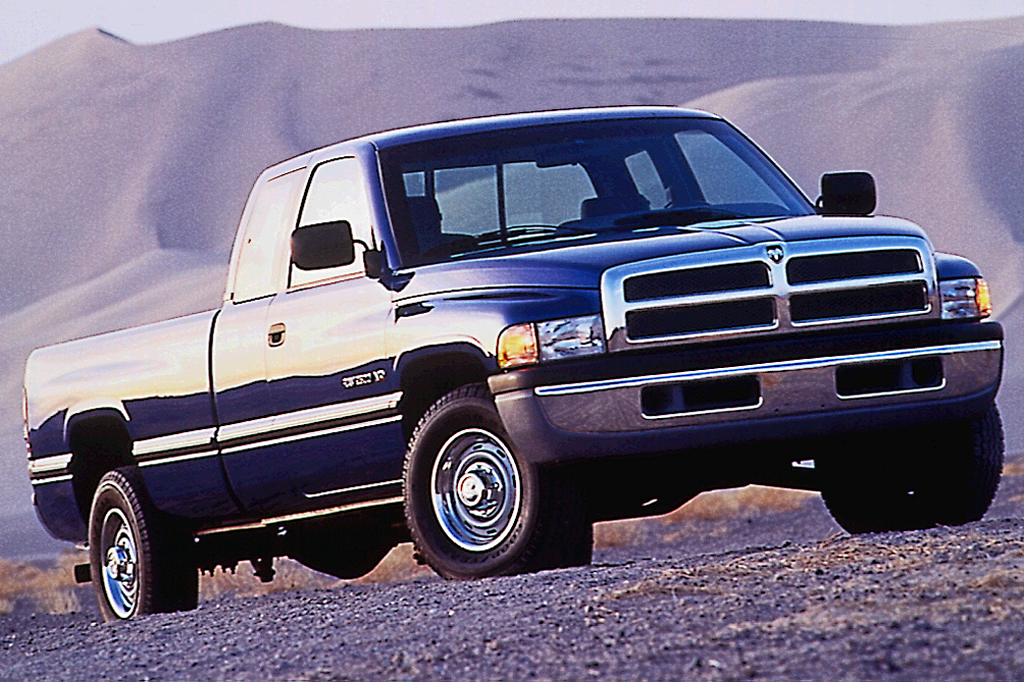
Now we’ll go from bad Dodge decision to good Dodge decision. Dodge had been designing an all-new followup to the pickup it had for like 203 years. Most of those designs looked like a conglomeration of any truck already on the market. Then Tom Gale’s design team decided to look back to WWII and the Power Wagon days for inspiration, and began developing a slightly retro front end with the front fenders low and a “power bulge” hood. It looked cool, mean, rugged, and was completely unique from everything on the market. And it was instantly recognizable as a Dodge. Uniquely Dodge. When it debuted in 1994 it was an instant hit. It pushed all of the right truck buttons with truck buyers who never considered a Dodge before. And, it was nothing that the other truck manufacturers could take because it was uniquely Dodge. That low fender/high hood aesthetic has continued through four generations of the Ram pickup right up to the current new model.



